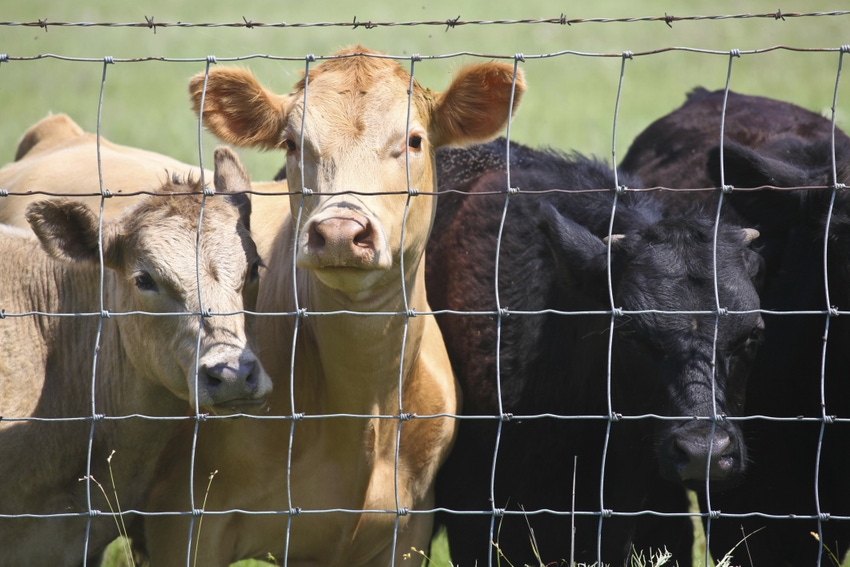Five-year, $400,000 grant to support Montana State University research on development of blood-brain barrier in calves.
May 14, 2018

How much a cow eats while she’s pregnant can affect the development of her calf’s brain as well as the calf’s future ability to reproduce, according to two Montana State University animal physiologists.
Montana State research scientist Jennifer Thorson and assistant professor Ligia Prezotto, both in the Nutritional & Reproductive Physiology Laboratory at the Northern Agricultural Research Center (NARC) in Havre, Mont., were awarded a $400,000 grant from the U.S. Department of Agriculture's National Institute of Food & Agriculture. NARC is part of the Montana Agricultural Experiment Station and the College of Agriculture.
Thorson, who has a doctorate in physiology of reproduction, said the grant will provide funding for the researchers to develop a greater understanding of how the nutrition of a cow during gestation affects how her calf responds to the environment after birth, which ultimately influences the calf’s life-long fertility.
Thorson added that the “research also has tremendous potential to serve as a biomedical model to better understand reproductive development and challenges that occur in humans.”
Thorson and Prezotto, who has a doctorate in animal sciences, comprise the research team that will feed cattle owned by the Montana Agricultural Experiment Station different diets in order to study the influence of diet on development and plasticity of the calf’s brain and blood-brain barrier. The blood-brain barrier is a semi-permeable structure that surrounds the central nervous system and regulates which molecules enter the brain. It allows nutrients to enter the brain but also blocks the passage of certain harmful substances and pathogens from entering the brain.
Moreover, Thorson said, the blood-brain barrier acts as a barrier between the calf’s brain and its endocrine system -- the system that manages development of the reproductive tract, the onset of puberty and reproductive function in all mammals.
“Depending on the permeability of the calf’s blood-brain barrier, molecules and hormones can pass through directly to the calf’s brain, signaling to the calf that it’s ready to reproduce,” Thorson said. “However, if the calf was exposed to malnutrition in utero, the development of its blood-brain barrier may be compromised, and thus, its ability to regulate reproductive function may be limited,” she said.
How much a pregnant cow eats and the timing of what she eats during the period when the fetal brain and blood-brain barrier develop can influence the health and performance of the calf, Thorson said.
“The nutritional environment of the calf during pregnancy affects how the calf’s blood-brain barrier develops, thus programing the blood-brain barrier’s ability to transfer signals between the brain and the rest of the body,” she said.
Essentially, if the calf’s brain cannot accept signals from the body, activation of the reproductive system is inhibited, Thorson said.
She added that a cow’s dietary intake during gestation directly affects her overall health and ability to maintain the current pregnancy, as well as her capacity to return to normal reproductive cycles following calving.
To understand the effect of prolonged changes in a pregnant cow’s feed intake, Thorson and Prezotto will assign cows to one of three diets for the duration of gestation. They will then compare the effect of the cow’s diet during pregnancy to the permeability of her calf’s blood-brain barrier and development of the reproductive system.
Prezotto said this area of blood-brain barrier and nutritional perception research is novel, having been conducted only in rodents so far.
“It’s important for scientists and producers to have a better understanding of how the physiological mechanisms of livestock work in order to make more informed decisions when selecting nutritional management approaches that best fit specific herds and production systems,” Prezotto said.
The two received specialized training in the blood-brain barrier field during a sabbatical within the Development & Plasticity of the Neuroendocrine Brain laboratory in Lille, France. The research lab specializes in using rodents to study the blood-brain barrier at the molecular level.
“This research is looking at the very basic molecular level of the interaction of nutrition and reproductive performance of beef cattle and their potential impacts on feed intake, fertility and long-term productivity,” Darrin Boss, NARC superintendent and head of Montana State's department of research centers, said. “Despite the research being largely in its infancy, it points to long-term implications on cattle reproduction that may be profound.”
You May Also Like


.png?width=300&auto=webp&quality=80&disable=upscale)
